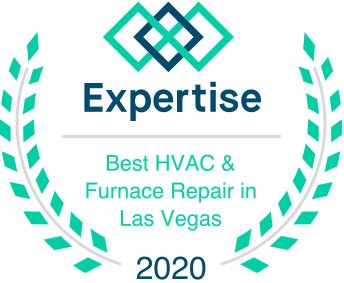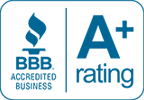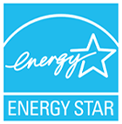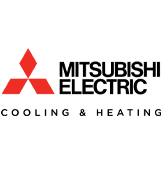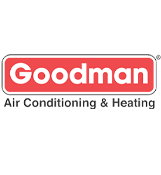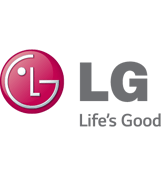
Ultraviolet (UV) light has been used historically to disinfect the air, water, and surfaces. UV light indoor air quality products employ this concept to destroy airborne microbes and improve the general air quality in homes.
Types of Ultraviolet Light
Ultraviolet light is a form of light that cannot be seen or felt. It has shorter wavelengths compared to visible light at 100 to 400 nanometers. Ultraviolet light comes in three forms:
- UV-A light – this range includes black lights with wavelengths of 315 to 400 nanometers.
- UV-B light – this range of light is what gives people sunburns and, in extreme cases, skin cancer. Wavelength is at 280 to 315 nanometers.
- UV-C light – this range has photons that vibrate the fastest thus carrying the most energy with a wavelength of 100 to 280 nanometers. UV-C light has multiple applications, including air purification as well as disinfection and sterilization in laboratories, water treatment centers, and food processing facilities.
Indoor Contaminants and Particulates
Air conditioner filters reduce large inorganic particles that pass through your ductwork. However, smaller microorganisms, known as bioaerosols, usually infiltrate the standard filtration media. Common airborne pollutants and bioaerosols include mold spores, mildew, bacteria, fungi, pollen, dust mites, soil, ash, pet dander, carbon monoxide, and tobacco smoke.
Each of these pollutants contributes to poor indoor air quality, which heightens allergies and respiratory problems.
Air Purifiers and UV-C Light
In the past two decades, UV light has been popularized in residential and commercial appliances. Having the highest energy, UV-C light is used in air purification systems. With its extra energy, UV-C light can alter the DNA of the microbes it absorbs, rendering them harmless. Bacteria are single-celled organisms that rely on the DNA to live, thus when their DNA is damaged by UV radiation, they are destroyed.
How Do UV Air Purifiers Work?
UV light air purifiers are a combination of a filter and a forced-air system. As such, UV light does not work alone as it works together with the filter to clean the air. UV lamps work in two ways to incapacitate microorganisms — killing them in the air and on surfaces. These lamps are usually used either in a standalone air cleaner (mainly used in hospitals) or buried in an HVAC system (mainly used in homes).
In UV air purifiers, UV lamps are usually installed in ducts near the HVAC unit. The UV light mimics the antimicrobial property of sunlight, so instead of trying to filter out the pollutants, it eradicates them completely.
UV-C lamps used in UV-C germicidal purifiers are usually installed in occupied rooms. It works to irradiate the air near the ceiling to deactivate or kill bacteria and viruses that may cause infectious diseases. UV light in these systems is also directed at the cooling coils and drain pans where mold and bacteria growth takes place.
Factors such as type of UV lamp, temperature, and humidity affect the performance of an air purifier.
How do UV Lamps in Residential HVAC Systems Work?
UV lamps are installed in an air handler, between the filter rack and cooling coil. Their main work here is to kill microorganisms growing in the drain pan or on the coil. These microbes usually grow when the coils get wet as a result of condensing water vapor. UV lamps work effectively in cleaning the coil and drain pan as it continually emits germicidal light on the indoor light that flows through the ductwork.
With the cooling system circulating your household air several times daily, your indoor air will be disinfected constantly by the UV lights. In about 45 minutes, half of the bioaerosols in your home will be eliminated.
Since UV light does not disperse aerosols, dangerous ozone will not be released into your indoor air.
Biocide Chambers
Biocide chambers are UV lamps that are installed above and beneath the air conditioning coil. These lamps work to eliminate bacteria and mold in the AC coil to purify the air before the air is circulated into your home.
Benefits of Biocide Chambers
- Reduced allergens, asthma attacks, bronchitis, and sinuses
- Eliminate molds and mildew
- Keep air conditioning coils clean and germ-free
- Reduced coil corrosion that contributes to refrigerant leaks
- Improved indoor air quality
- Reduced HVAC system repair costs
Effectiveness of UV air purifiers
While UV-C light has been approved to deactivate microbes in the air and on surfaces, its effectiveness depends on various factors, including:
- The pollutants coming into contact with the UV light
- The cooling effect of airflow obstructing the UV light
- The intensity of the UV light
- The material of the UV lamp bulbs
- The amount of time that the pollutant is exposed to the UV light
UV Light Indoor Air Quality Products vs. Microorganisms
UV light can deactivate some types of bacteria and mold. However, most bacteria and mold spores are resistant to UV radiation thus require high levels of UV light. This means that for bacteria and mold to be eradicated by residential air purifiers, high levels of UV light and prolonged exposure will be required.
UV Light Indoor Air Quality Products vs. Allergens
UV air purifiers may not have the ability to entirely remove allergens, cigarette smoke, chemical fumes, dust, and pet dander from the air. Most allergens are not susceptible to UV radiation, which could render UV air purifiers ineffective against allergies and asthma.
UV Light Indoor Air Quality Products vs. VOCs
Most dangerous pollutants such as volatile organic compounds are immune to UV-C light. VOCs are usually found in paints and varnishes, cleaning and disinfecting products, as well as cosmetic solutions. UV light exposure could alter these VOCs to more dangerous elements.
The Downside of UV Lamps
In some UV lamps, regular oxygen (O2) may be converted to break up and form ozone (O3). While ozone is useful in the stratosphere, it is a pollutant on the ground level. According to the EPA, ozone can damage the lungs, cause chest pain, coughing, shortness of breath, and throat irritation, and worsen chronic respiratory diseases such as asthma.
Fortunately, not all UV lamps cause ozone generation. To know which lamps are safe, check out for the glass used in the UV lamps. Avoid soft glass or regular quartz as they generate ozone. However, if quartz glass is combined with titanium, UVC is absorbed and, as a result, ozone is not generated.
Conclusion
UV light indoor air quality products like UV lamps may improve your indoor air quality by eliminating some bioaerosols in the air. However, they are not that good at killing bacteria, fungi, and viruses. In that case, you shouldn’t rely on these appliances to eradicate the novel coronavirus. But since these products have disinfection capabilities, you could benefit from them if you go for UV lamps that do not generate ozone.
Schedule your Servicing Today with Polar Air & Heating, Inc.
If you are considering UV light indoor air quality products, we at Polar Air & Heating, Inc., are ready to help. For expert heating and air conditioning services, contact us, and with our vast experience in HVAC systems, we will be glad to service your system, install a new system, repair a faulty system, or offer expert advice on which systems to adopt in your residential or commercial establishment in Las Vegas and surrounding areas. Schedule your next HVAC system servicing today!


